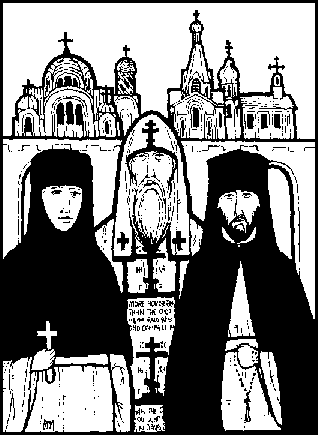
For this activity, you'll need a few blindfolds, a Bible, an icon of the Transfiguration, and a lot of trust! Our goal is to lead the children or teens on a journey to understanding God better. Remember, Peter, James, and John were still not able to identify Christ as God before the Transfiguration happened on Mt Tabor. We say that their eyes were yet to be illumined...
To begin, consider your surroundings: your home, a park, the Church? Where might you hide the icon of the Transfiguration, so that you can lead the children or teens to it? Can you climb up stairs, while holding hands blindfolded, to simulate ascending Mt Tabor? Can you convince them to trust you, while they are uncertain where you are going, and why? When you arrive at your destination, only then can the blindfolds be removed, hands let go, and the story revealed.
Explain that God had a very important message for the disciples before His crucifixion, just like Moses who climbed Mt Sinai to receive the 10 Commandments. Like them, you have ascended to a high place to learn about Christ. How did it feel trusting the leader? Are they ready to see why they've taken this journey?

Ask one of the children to read out loud Matthew 17:1-9.
Next review the icon together and identify why each person was there: Moses, represents the Jewish Law, Elijah, represents the Prophets, Peter, James and John, represent all those alive in Christ. The Holy Trinity is also present. Can they identify how? The Father speaks, Christ is present both fully divine and human, and the Holy Spirit is the Holy Light surrounding Christ.
Complete the discussion by asking the children to draw out the important lessons they have learned about God. What did He want to teach us?
* That Jesus is fully God and fully Man
* That Jesus is the bridge of the past, present, and future:
by having present Moses, Elijah, and the new disciples
* That God is the Holy Trinity
* That we too can become like Christ, transfigured and
radiant with the Holy Spirit
Along your journey back, chat with the kids/teens about the timing of this event in Christ's life and explain that the Transfiguration happened right before Jesus was to be crucified. For us today, we can feel equipped with the Truth and prepared for the trials ahead of us, as the disciples did entering the Lord's Passion.
Please e-mail eleniemarie@gmail.com if you would like to receive the Word Scramble handout on this lesson or the icon larger which includes the journey up the mountain together and back down.
























